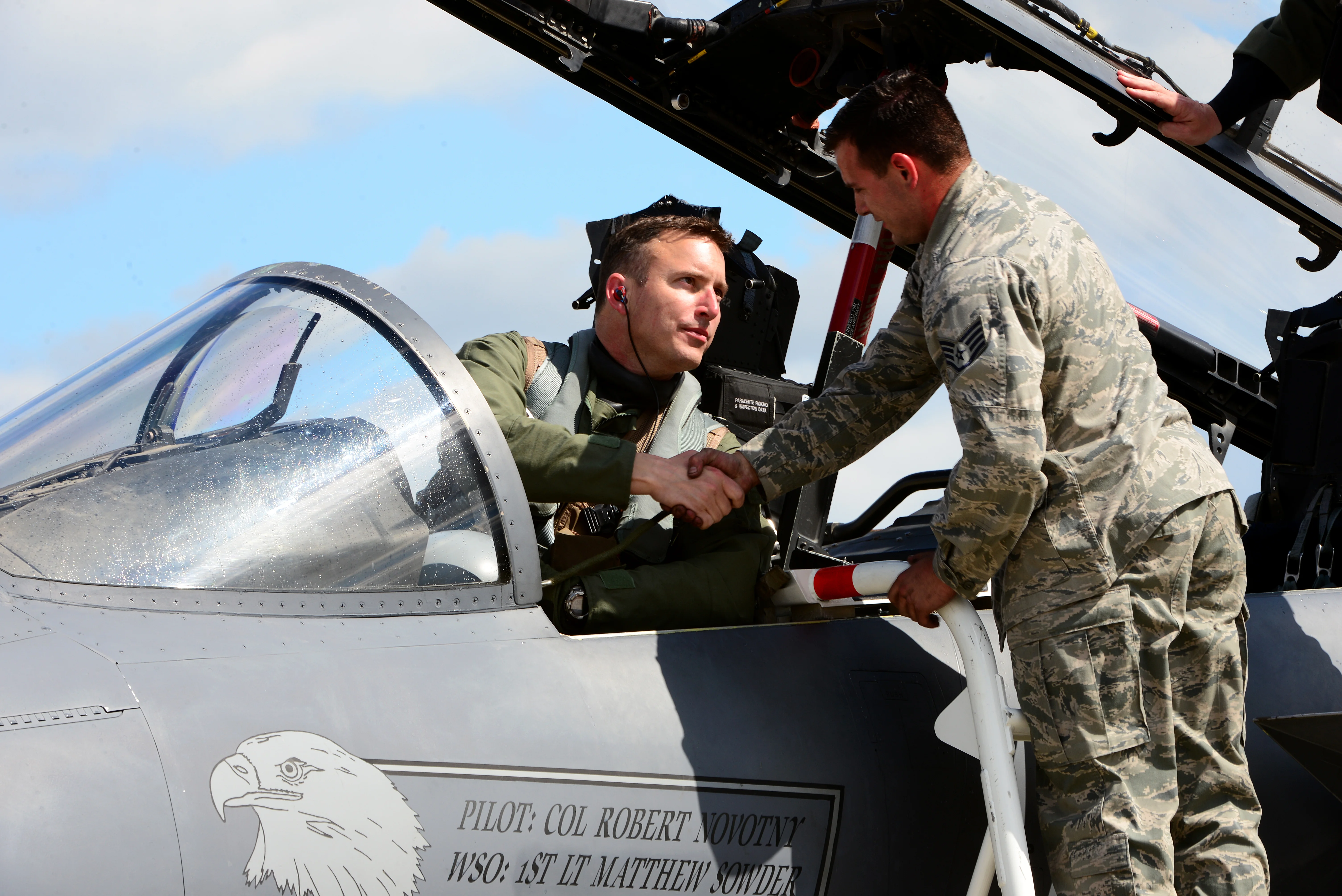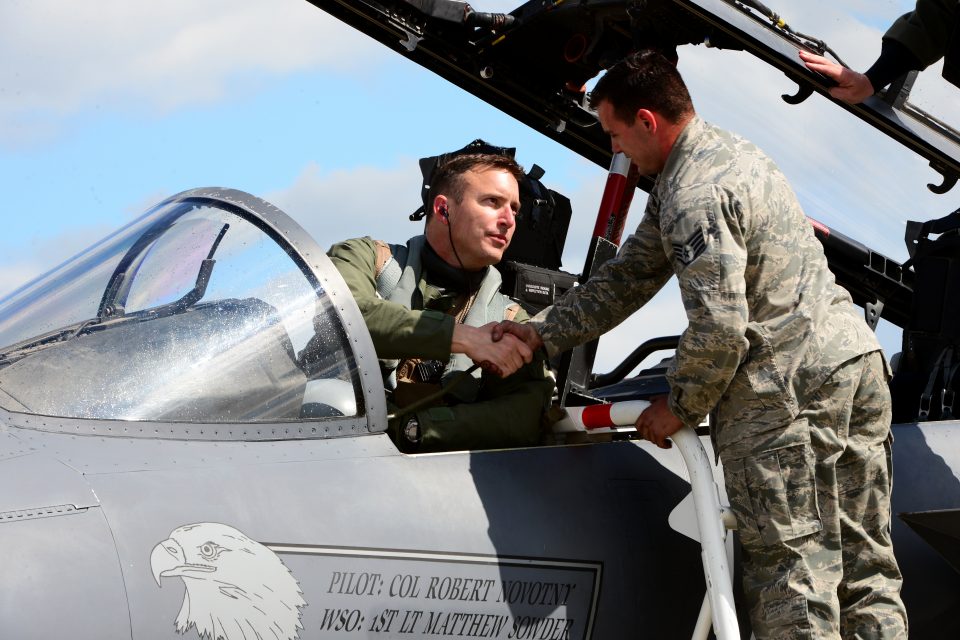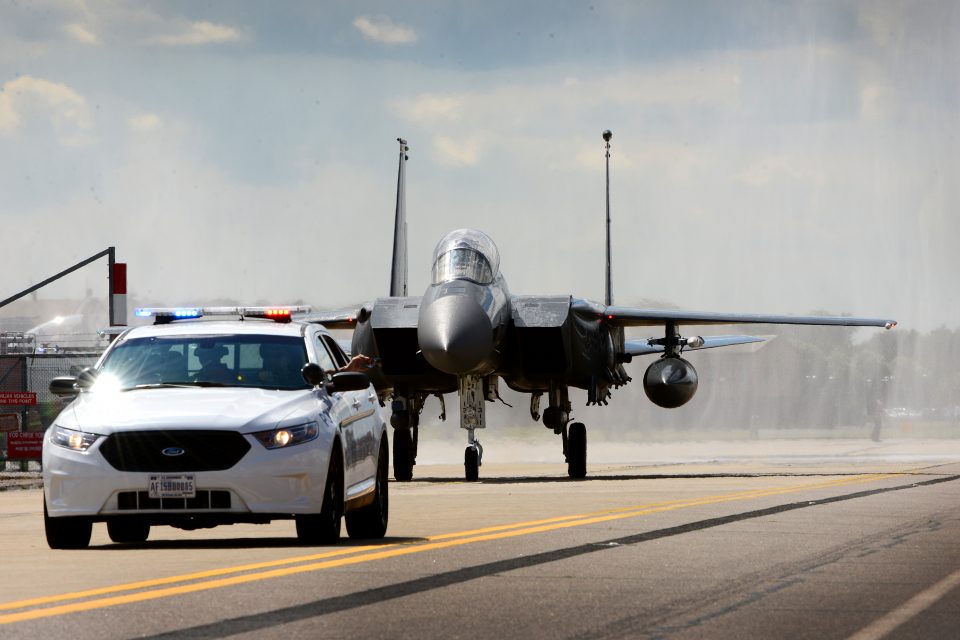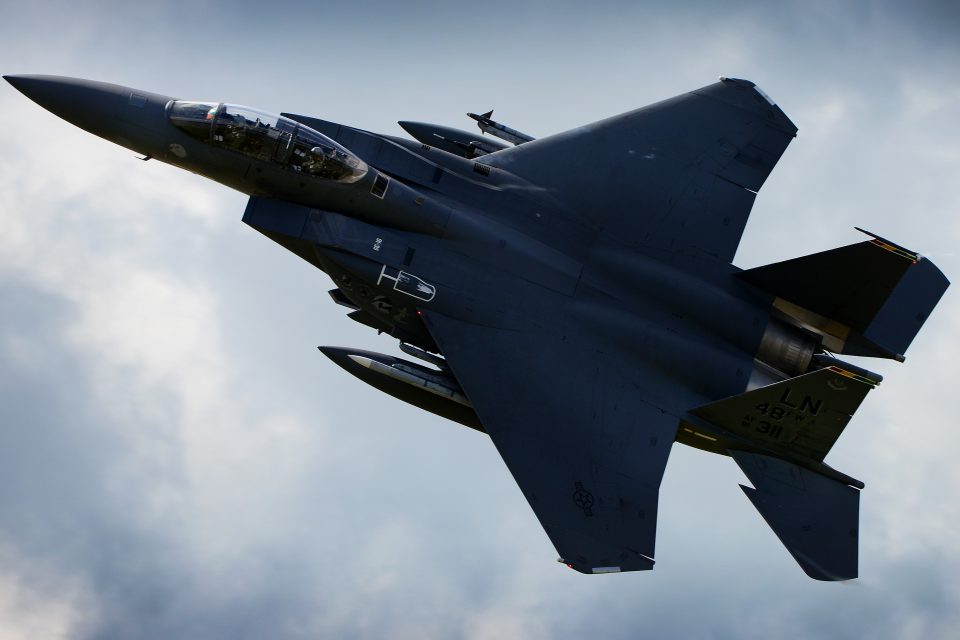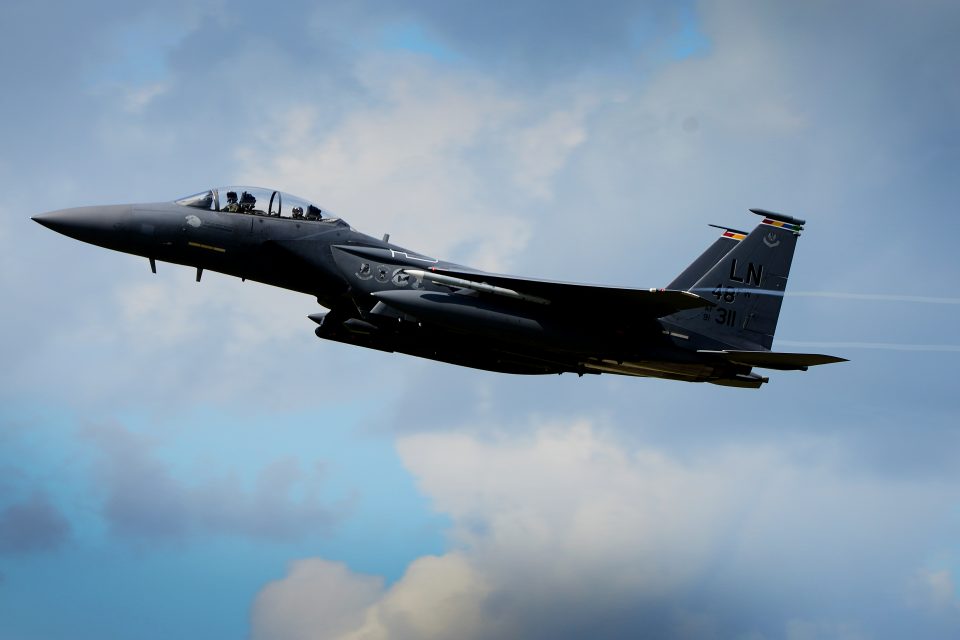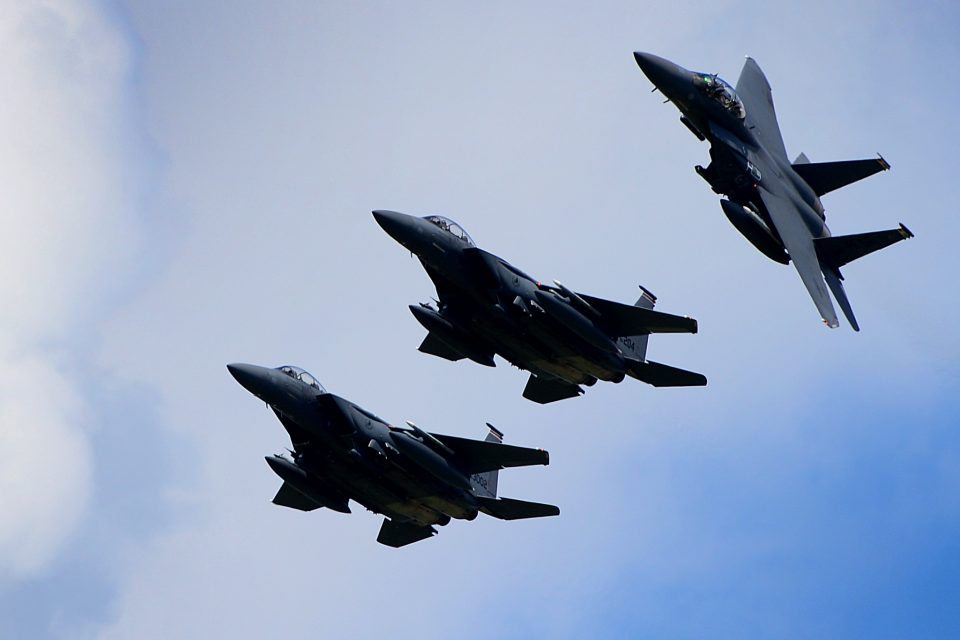2017-11-10 By Robbin Laird
In a visit to Langley AFB on October 31, 2017, I had a chance to talk with Brigadier General Novotny, Deputy Director of Plans, Programs and Requirements at the Air Combat Command.
I first met “Blend’r” when visiting RAF Lakenheath where he was the CO of the Liberty Wing based in the UK.
During that conversation, then Col. Novotny provided a forward leaning look at how the USAF working with allies could transform crucial military capability going forward.
During my visit last year I discussed the impact of the synergy of the US and the allies standing up at the same time the new air combat force with then Col. Novotny, the 48th Fighter Wing Commander, and now General Novotny at the Air Combat Command.
“We are not flying alone; but joined at the hip. We will be flying exactly in the area of interest for which the plane was designed and can fly together, maintain together, and operate together leveraging the air and sea base for which the F-35 B will fly from as well. It is a unique and strategic opportunity for the USAF and for the nations.”
General Novotny added that the two bases joined at the hip can provide a key strategic impact as well.
“As we get this right, we can bring in the Danes, the Norwegians and Dutch who are close in geography and the Israelis and Italians as well to shape the evolving joint operational culture and approach. Before you know it, you’ve got eight countries flying this airplane seamlessly integrated because of the work that Lakenheath and Marham are doing in the 20 nautical miles radius of the two bases.”
The RAF, the RAAF, the USAF and the USMC are already learning how to integrate the F-35 into the air combat force at Red Flags, and recently have included the French Air Force in a Langley trilateral training exercise. But integration will be accelerated by the integration of normal operations from common bases throughout the European region as well.
As Novotny put it: “Doing Red Flags requires bring forces to Nellis and expending monies to come to the exercise, clearly an important task notably in learning to fly together in high intensity warfare exercises. But what can be shape from the RAF Marham and Lakenheath bases is frequency of operations with core allies flying the same aircraft.”
“The same aircraft point can be missed because the UK did not fly F-16s, the Norwegian, the Danes and the Dutch do. And the USAF does not fly Typhoons and Tornados; the UK does. Now they will ALL fly the same aircraft.”
“I did two OT assignments and we worked to get into Red Flag when we could to do joint training. Here we can do that virtually every day. We reach the Dutch training airspace, and can work with the Dutch, with the Brits, with the Germans, with Typhoons, with F3s, with the NATO AWACS. We take off and we fly 30 minutes to the east and we make it happen. It is Red Flag as regular menu; rather than scheduling a gourmet meal from time to time.”
https://sldinfo.com/synergy-and-building-out-extended-nato-defense/
Given his ability to think forward, it is not surprising to find him doing just that at ACC.
We started our conversation by focusing on a key them, which the Second Line of Defense team is highlighting going into next year, namely, the challenge of shifting from slo mo to high intensity operations.
And the Williams Foundation in Australia will be hosting two seminars on this challenge as well.
As we have put the question: How will the US and the allies make the shift towards high-intensity warfare, and to take the force we have and make it more high intensity combat ready and ensure that modernization going ahead enhances the capability to engage in and win high intensity conflict?
As General Novotny underscored, the ACC Commander is clearly focused on this challenge and discusses the significance of bringing the future forward much more rapidly in terms of force transformation.
“General Holmes highlights that global adversaries are clearly modernizing and recapitalizing their forces and that we must get better at setting the bar and get in front of the modernization curve.
“If we continue to modernize, and we try to buy software the way we buy hardware, we’re going to be behind the power curve.”
Novotny added: “Secretary Mattis came out with some new national defense strategy guidelines that told everybody to focus on the high-end portion of the fight and to do the low-end fight economically.
“We’re using that as our go to guide.”
The normal perception of ACC and how it thinks about requirements revolves around fighter aircraft. How to modernize and what comes next?
But it is clear from talking with General Novotny, that this is clearly the wrong way to think about how ACC is thinking today.
The focus is upon airpower within the overall combat modernization effort.
One way to look at this broader effort is to consider the warfighting dossiers which the ACC deals with.
“General Holmes has five core function portfolios that he husbands for the United States Air Force: air superiority, global precision attack, command-and-control, a globally integrated ISR portfolio, and the last is personnel recovery.
“The challenge is to accelerate our combat power.
“For General Holmes, what can be delivered in the next five to seven years is a crucial driver of change.
“And getting on top of the software upgradeability cycle is a key part of the challenge, which needs to be met.
“For example, with regard to the F35, the mission data file system is so expansive, we’ve got to be able to rapidly reprogram, because the reality is, the mission data file we take to war will need to evolve within the context of the fight itself.
“Ultimately you would like it to be an interactive learning system.
“Which, to us, is where we would like to go with the advanced battle management surveillance system.”
The Waze Analogy
The way Novotny then characterize a way to think about ABMS and more generally about shaping an interactive and evolving force is an analogy to the WAZE software system.
Waze is really a common operating environment that is only good if people put information into it. It’s completely agnostic to your platform. It doesn’t care if you have a Samsung galaxy, or an iPhone, or a Google phone, it doesn’t care. It doesn’t care about your data connection. It doesn’t care if you’re on Verizon, or AT&T, it didn’t care if you’re on Wi-Fi or cellphone, 4G or LT.
“All that matters is that you participate in the network. As you participate in the network, it becomes greater fidelity, and allows you to make decisions, and sometimes Waze makes decisions for you as far as plotting your route of travel.
“It identifies threats, okay that road’s closed, there is a police officer there, there’s a car accident, and it will reroute you. It will allow you to push data in. It also pulls data from you. Not only does it have your overall geolocation and speed, but it will actually interact with you as the user, and it will say, “Hey, I’m sensing you’re slowing down, are you in traffic?” It will say, “Hey, you’re slowing down, that usually means you might be in traffic. Are you in traffic?” You go, “Yes, I am in traffic.”
“Immediately the road turns yellow, or orange, or red, and it will begin to reroute.
“For us, the advanced battle management system in the future is very similar to Waze. Every single platform is a sensor agnostic.
“I don’t care if it’s a frigate radar, I don’t care if it’s a submarine, I don’t care if it’s overhead, I don’t care if it’s F35, I don’t care if it’s fourth-generation, I don’t care if it’s Army MLRS sensor. I don’t care if it’s commercial. We have ATT radars, we have DirecTV making transmissions, we have weather radars.
“A Common Operating Picture is generated which then can be leveraged as the task demands.”
“And in a system where every platform is a sensor, then when a force package is tasked to do a mission, other users can leverage data generated by the force package participants in the system to do their missions as well.
“The system will recognize that there is data missing on a potential target. Based on idle time, let’s say a sniper pod out a strike Eagle, as the pilot’s flying to the tanker, the sniper pod is usually in idle status, it’s not doing anything, but now in advanced battle management system says, “Hey, you have an opportunity, based on your location, and what I know about your system, and the fact that I can communicate, that you can potentially surveil that target.”
“It just commands the sniper pod to go take a look at it.”
Advanced Battle Management Evolution
“Increment one of Advanced Battle Management is taking current systems, or systems under development, or current things we’re working on, and make sure that they able to talk to each other.
“The task here is refining some incremental development in their capabilities to what they can provide to the network.
“Increment two would be fusing the whole thing together and that fusion goo can be leveraged by a force package tasked to do a mission.
“Increment three would leverage the earlier increments and shape a capability to leverage data from platforms engaged in a mission to deliver data useful for other mission.
“If your systems can provide some data to the overall architecture, it would be possible actually to command your radar to go over and take a SAR map, even though you’re not using it.
“I’m driving 200 miles to my push point, so I have 200 miles of semi idle time for my systems, whether that’s my DAS, or or my radar on an F35 for example and that data could then be leveraged for other missions or other players in shaping missions.
“The advanced battle management system can then build an evolving mission data library and that data can be leveraged for future tasks and missions.”
“To get there, clearly there is a need to drive software innovation more rapidly and to reshape the requirements process to facilitate rather than to impede to evolution of software upgradeable platforms and their ability to work together in an interactive combat space.
Currently, the JCIDS or the Joint Combat Integrated Development System is an impediment to getting the software innovation job done understood in the 21st combat context.
“It was built to design battleships or for platforms which are relatively static over a significant period of time.
“It is not designed to provide for the software transient advantage needed to deal with today’s and tomorrow’s high tempo and high intensity operations.”
One solution would be to fund on a three year basis the software development of key platforms and to let the warfighters and software code writers evolve their capabilities within the budget and the results could then be briefed to Congress.
But clearly, the business rules need to change to allow for interactive software upgradeability to be facilitated.
As I wrote earlier with regard to changing the business rules to enhance the capabilities for airpower integrated battlespace 21:
With the cross learning among the combat forces as they shape more effective integrated combat forces to prevail in a contested environment, the business rules need to change to adapt platforms more rapidly to evolving combat requirements.
The force will be built around core multi-mission platforms, which are software upgradeable.
The challenge will be to ensure that those platforms are more rapidly upgraded and modernized.
The answer is large part to shape business rules that allow the combat users to work directly with the software code writers to provide for what the RAAF refers to as gaining software transient advantage.
The legacy requirements setting process in DoD needs to be replaced by a new set of business rules which allow for such cross development and modernization.
Put bluntly, DoD is not in the software age even though several of their cutting edge platforms are.
Let me be even more blunt: our own business rules guarantee that we will not take full advantage of the software upgradeable platforms we are ALREADY buying.
https://sldinfo.com/changing-the-business-rules-enhancing-the-capabilities-for-airpower-ib-21/
Clearly, the nature of the modernization enterprise needs to be recrafted to ensure that the future can be brought forward in the way General Holmes envisages.
Editors’ Note: The slideshow above highlights Col. Novotny’s last flight as the Liberty Wing Commander.


